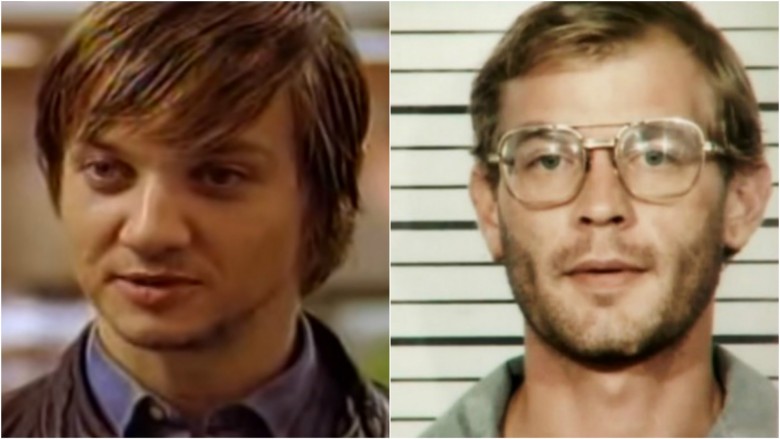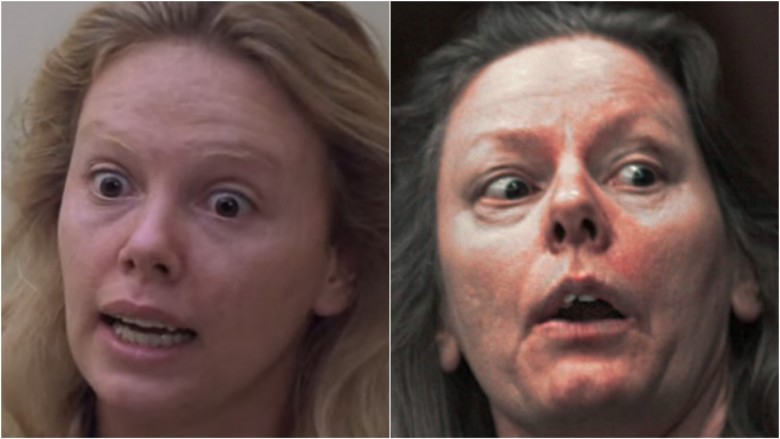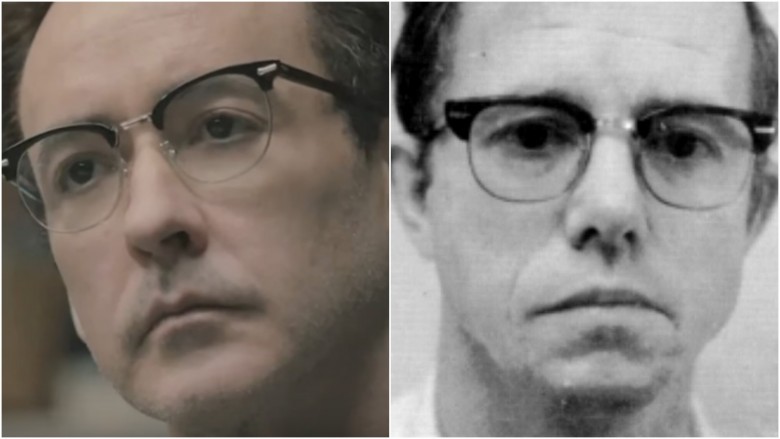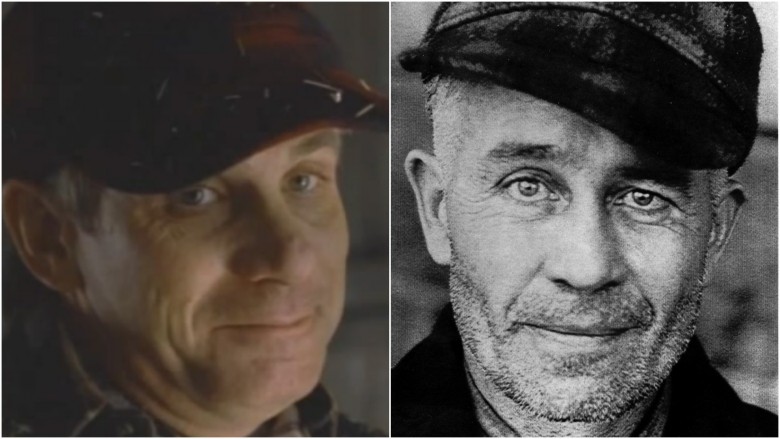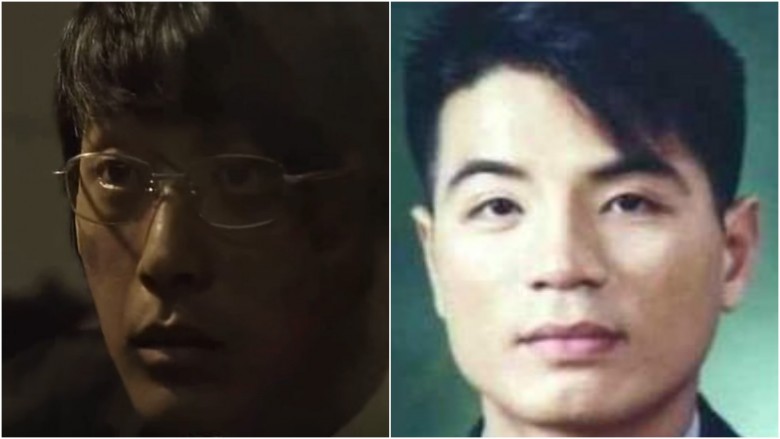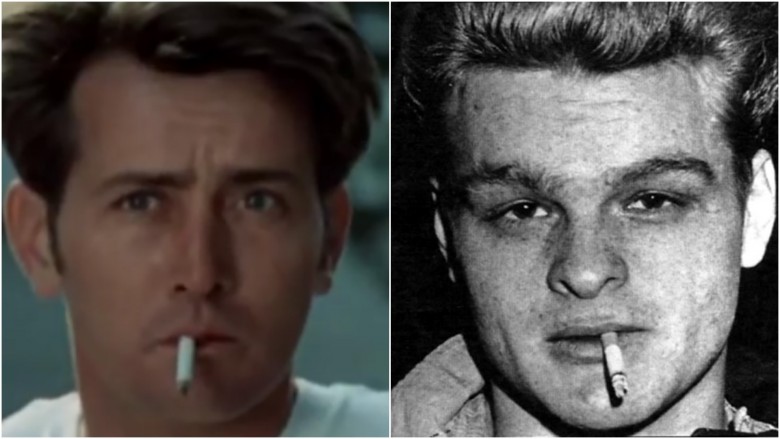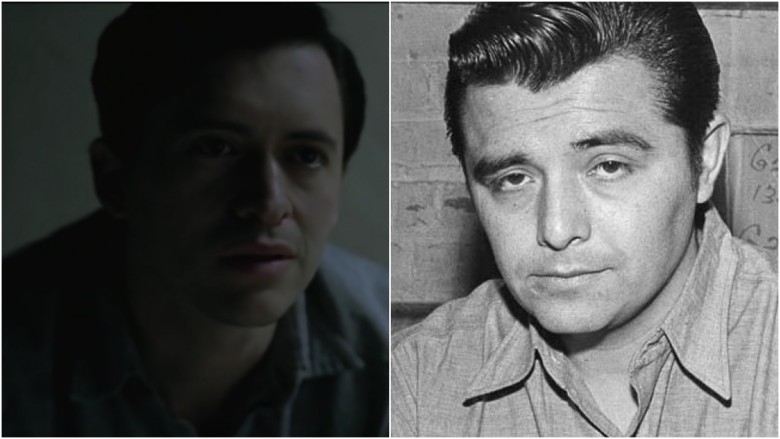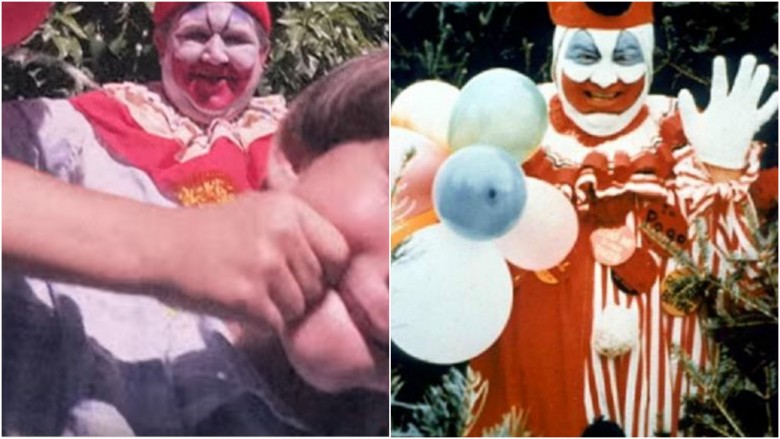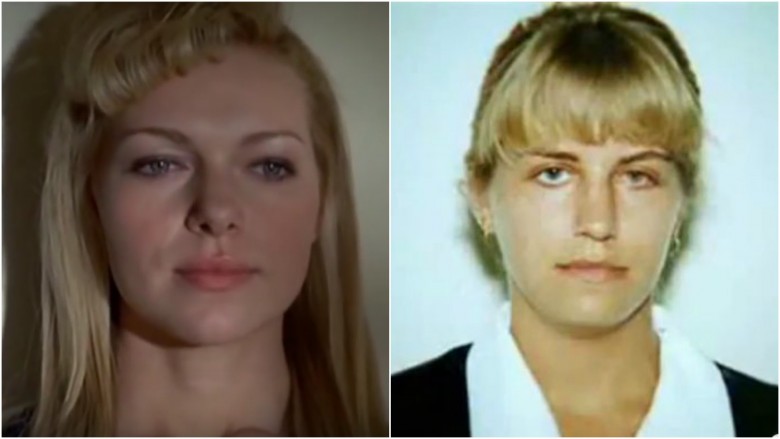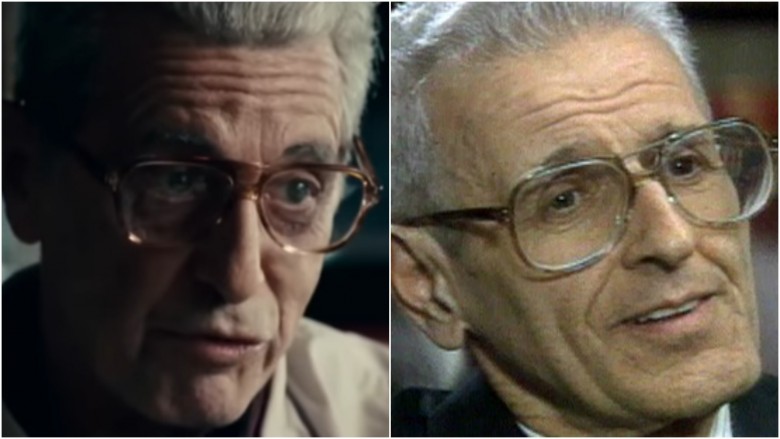How Movie Killers Should Really Look
Based on a true story? It's a tagline you've gotta take with a grain of salt these days, considering that filmmakers often have no problem stretching—or outright ignoring—the truth to bring a story to the silver screen. Take The Texas Chainsaw Massacre: This cult slasher about a human-skin-wearing maniac tells the story of real-life killer Ed Gein the same way Taco Bell offers a genuine Mexican culinary experience. The ingredients are there, but they've been shoveled into a cement mixer and tumbled until they're something else entirely.
And yeah, it's a great movie, but Gein didn't need a chainsaw to be despicable, and Chainsaw didn't need a Gein connection to be thrilling. The ugly truth is, history is peppered with real-life monsters, and while plenty of films have taken a stab at tapping into that horror, not all of them managed to stick with the story. How do these movie versions of real killers stack up? Let's take a look.
Jeffrey Dahmer (Dahmer)
Between 1987 and 1991, Jeffrey Dahmer lured 16 gay men to his apartment, fed them sleeping pills, and killed them. Some he dismembered in the bathtub and threw out with the trash, others he dissolved in a big blue barrel of acid in his bedroom. When Dahmer was arrested on June 22, 1991, the police found a freshly severed head in the crisper drawer of his fridge and a half-finished shrine made from the boiled and bleached skeletons of the men he'd killed. Later, he admitted to eating some of his victims' hearts. And that's just the beginning.
Jeremy Renner, who portrayed the Milwaukee Cannibal in the 2002 biopic Dahmer, reportedly didn't have a lot of time to prepare for his role, saying in an interview, "I didn't even know who Jeffrey Dahmer was, and then four days later after reading the script we're going into principal photography, and two weeks later we're done." Nevertheless Renner's performance—and appearance—is eerily true to the man who liked to drill holes in his victims' heads and pour acid into their skulls while they were still alive. Just look at those cold, lifeless eyes. No wonder he had trouble getting a girlfriend after making the movie.
Aileen Wuornos (Monster)
Charlize Theron's Oscar-winning take on highway killer Aileen Wuornos in 2003's Monster is as bleak as it gets, but the real story is even bleaker. In 1989 and 1990—the same time Dahmer was murdering men in Milwaukee—Wuornos lured men into the woods 1,000 miles to the south in central Florida and shot them point-blank with a pistol. In less than 12 months, she shot seven men and pawned their belongings in nearby cities, leaving their bodies in the woods.
Charlize Theron gained 30 pounds for the role and endured painstaking sessions in the makeup chair to have the latex and dental prosthetics applied before filming. All of it was to match as closely as possible the appearance of the real Aileen Wuornos, who was at the time on death row in Florida (Wuornos was executed the year before Monster was released). To match Wuornos' mannerisms, Theron watched documentaries about the killer and read through 12 years' worth of personal correspondence that Wuornos had sent from jail. All said and done, Theron entirely embodied the looks and spirit of Aileen Wuornos, leading Roger Ebert to call it "one of the greatest performances in the history of the cinema."
Robert Hansen (The Frozen Ground)
You may have missed The Frozen Ground, starring John Cusack and Nicolas Cage, when it came out in 2013. With a limited theatrical release and lukewarm Netflix reception, the best place to find the film these days is in the $5 bargain bin at Walmart, probably sandwiched right between Drive Angry and Drive Hard like the tasty cream filling of a stale Oreo. The Frozen Ground is a slow burn set in the Alaskan wilderness that tells the story of the hunt for Robert Hansen, a serial killer who admitted to torturing and killing 14 women in the '70s and early '80s, although he was believed to have killed at least 17. Dubbed the Butcher Baker, Hansen was arrested in 1983 and spent the next 31 years in prison before dying behind bars in 2014.
One of the most shocking aspects of Hansen's killing spree was the fact that even while he was releasing girls into the woods and hunting them, he led a dual life as a respected community member and family man in Anchorage. Director Scott Walker told Entertainment Weekly that he cast Cusack because he needed someone "who can portray him as a killer, but also as a man who lived with friends and family and ran a successful business." In that respect, Cusack gave a convincing performance, even if his only physical change for the role was to, well, put on glasses.
Ed Gein (Ed Gein)
Despite being the basis for plenty of film killers, such as Buffalo Bill in The Silence of the Lambs and the aforementioned Leatherface in The Texas Chainsaw Massacre, the real-life Ed Gein only killed two people. What he did a little more often was dig up corpses and make clothes and lampshades out of their skin...because he wanted to look like his mother.
With a story as messed up as that, it's no wonder Gein inspired so many screen killers, although 2000's biopic Ed Gein is one of the few films that focuses on the real guy behind the macabre crimes. It's not a sensational stop-him-before-he-kills-again kind of story, although it definitely dives into disturbing territory (seriously, how could it not?). Steve Railsback, who started playing killers in 1976 as Charles Manson in Helter Skelter, is pretty believable as the oddball farmer who's secretly insane enough to put on a woman's skin and dance around in his front yard.
Yoo Young-chul (The Chaser)
Korean films usually have no problem getting downright crazy with their premises. Look at 2008's The Chaser, for example. The movie follows a pimp who gets suspicious when some of his prostitutes disappear, only to discover that a serial killer has been nabbing his girls and murdering them. The pimp goes after the guy and brings him to justice. Great story, but pretty far-fetched, right? Except, of course, that it all actually happened. In July 2004, the owner of a massage parlor set up a meeting with a client who seemed to be connected with the disappearance of some of his workers. With the help of several employees, he subdued the guy and got a passing police officer to put him in cuffs.
Their collar turned out to be Yoo Young-chul, a serial killer who confessed to killing 21 people in 2003 and 2004. He preyed exclusively on prostitutes and rich men, and he claimed that after killing them he would eat their livers. The Chaser is loosely based on the story, although it takes plenty of liberties with the details. And that's too bad, because it would be awesome to know that out in the world somewhere, a renegade pimp brought a killer to justice with nothing more than the stinging sweat of his own fists.
Charles Starkweather (Badlands)
Terrence Malick's 1973 film Badlands tells the story of 25-year-old Kit and 15-year-old Holly, two kids in the dusty Midwest who fall in love and take off on a killing spree across South Dakota and Montana. Starring Martin Sheen and Sissy Spacek as the young star-crossed killers, the movie swept the '73 New York Film Festival, earned rave reviews, and went down in history as a new American classic. And it was all thanks to a pair of real lovestruck teens who held the held the heartland hostage in the winter of early 1958.
Charles Starkweather, who inspired Martin Sheen's Kit, was 19 years old when he and his 14-year-old girlfriend, Caril Ann Fugate, started their murder spree. Starkweather first killed Fugate's entire family, and then the couple took a car across Nebraska and Wyoming, killing 10 total people before the carnage came to an end. Both Starkweather and Martin Sheen's character were self-professed admirers of James Dean, which is pretty obvious in the way they styled their hair and clothes.
Perry Smith (Capote)
The non-fiction crime novel In Cold Blood tells the true story of Truman Capote's interviews with Perry Smith and Richard Hickock, who gunned down a family in Kansas in 1959. During his research, Capote became friends with Smith and spent a lot of time visiting him in prison. That friendship, in turn, served as the basis for the 2005 Oscar winner Capote. As Truman Capote, Philip Seymour Hoffman is phenomenal, but not a lot of people pay much attention to Clifton Collins Jr., who all but disappeared into the role of remorseful killer Perry Smith.
Physically, there are plenty of differences between the killer and Collins' onscreen portrayal, but Collins also read many of the letters that Smith and Capote sent to each other and developed such a connection with the man (who was executed in 1965) that it's difficult to imagine the role being done in any other way.
John Wayne Gacy (Gacy)
The original killer clown, John Wayne Gacy is a legend born of nightmares. And yeah, thanks to that whole murderous clown thing, Gacy has inspired more than his fair share of silver-screen psychos. Remember Twisty the Clown from AHS: Freak Show? Sure you do. Like a savory marinade, he soaks into your psyche and puts down roots. Roots that go straight back to the real-life freak show who murdered 33 boys and buried them in the crawlspace under his house.
But while plenty of characters have drawn inspiration from Gacy's macabre Pogo the Clown act, surprisingly few films have been made about the man himself. The 2003 biopic Gacy is, let's face it, a turd in a handbasket, but it at least made an effort to depict the killer's life in a realistic way. Gacy is played by Mark Holton, who lends a heavyset hostility to the role, but the similarities stop about there. Well, other than the makeup. The makeup is spot on.
Karla Homolka (Karla)
The 2006 crime thriller Karla is a brutal film told from the point of view of Karla Homolka, a Canadian woman who murdered three women with her husband in the early '90s. On the outside, they were the perfect couple, but behind closed doors they led lives of torture and death. The couple was arrested in 1993, and Karla's husband, Paul Bernardo, was sentenced to life in prison. Karla spent 12 years in custody for the crimes but was released in 2005.
In the film, the blonde-haired Karla is played by Laura Prepon, more commonly known as, yup: Donna from That '70s Show. Offsetting girl-next-door charm with sudden and alarming bouts of sadistic ruthlessness, Prepon plays Karla Homolka convincingly enough to make the movie interesting, if not exactly good.
Jack Kevorkian (You Don't Know Jack)
Was Jack Kevorkian a serial killer or an agent of mercy? Even today, the debate rages on about the physician the media dubbed "Dr. Death" for championing assisted suicide. In You Don't Know Jack, Al Pacino takes over the titular role as a man who fights the social norm to give people the option to choose their own deaths. The HBO film won Al Pacino a Golden Globe award, a Primetime Emmy, and a Best Actor SAG Award, and it's easy to see why. Although Pacino admitted that he never met Kevorkian (who was still alive for the film's 2010 release), he had plenty of televised footage and writings to base his performance on. Everything from his glasses to his mannerisms to his courtroom rants during the trial are prime Kevorkian. So while even Al Pacino didn't personally know Jack, he made sure the rest of us got a chance to.

